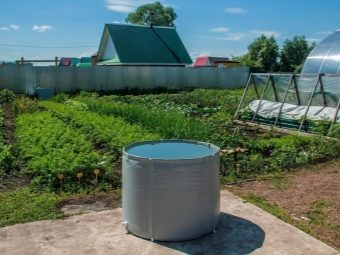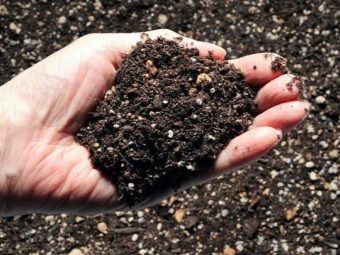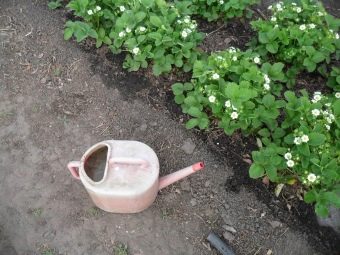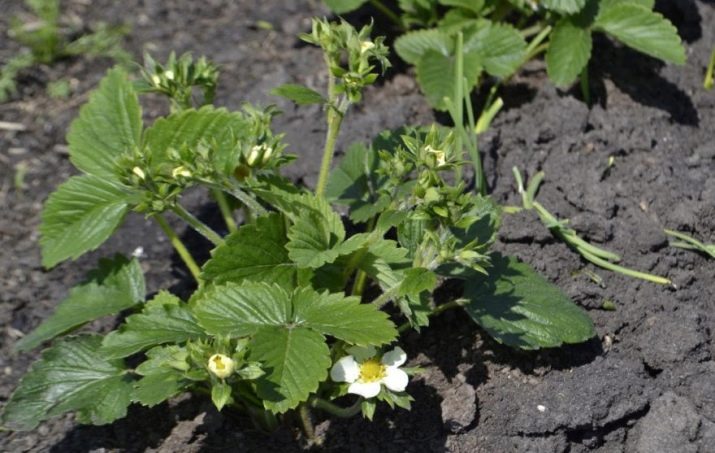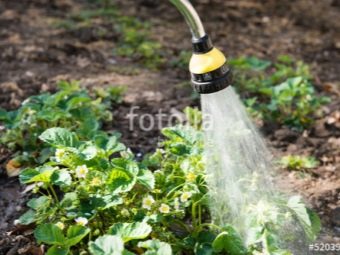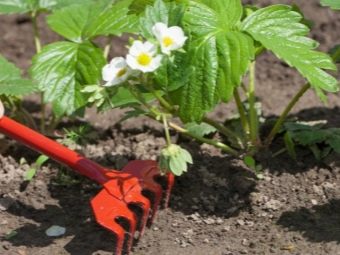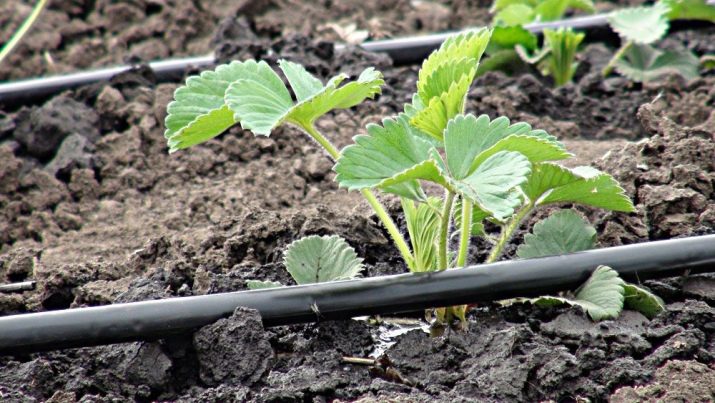Rules for watering strawberries during flowering
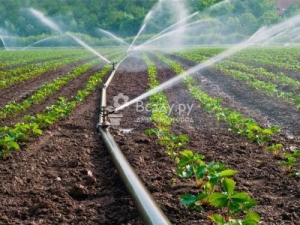
In the process of planting strawberries in their plot, gardeners very often encounter watering problems.It should be noted that at different stages of flowering the technique of watering water and its quantity differ. In order to get a quality crop at the output, it is necessary to plan watering as much as possible, its schedule and other subtleties. Only in this case will it be possible to provide strawberries with proper conditions, which will undoubtedly affect the taste of the product. If the plant blooms badly, then we can confidently talk about breaking the rules for watering.
Special features
In addition to a sufficient amount of water, strawberries also need a constant supply of oxygen to the roots, so this process must be combined with loosening. Only in this way can one achieve suitable conditions for growing strawberries and obtaining a good harvest.
You should also take into account the fact that this plant is able to pull water from the lower layer of the earth, as the roots do not go too low. In other words, the loss of moisture here is huge, so you need to fill them on a regular basis.
The irrigation rate can change all the time, and depends on the amount of precipitation that has fallen. If it rains constantly, then strawberries are covered with a special film. Due to this, it is possible to prevent the appearance of fungal infections.
For different types of soil there are different norms and levels of humidity. If these are sandy variants, then the humidity should fluctuate around 65-70%, while for clay variants, 65% is considered the norm.
If spring has a minimum amount of precipitation, the first watering should be carried out no later than the beginning of April. Of course, if the strawberries are planted on light ground, then it needs less water than on heavy.
Water supply frequency
Begin to water this culture should be early in the morning, so that in the evening the bushes had time to dry. In no case can not fill the plants, as this can cause many diseases.
Some summer residents mistakenly believe that the more often you water the strawberries in the heat, the better the harvest will be. However, in practice it does not contribute to an increase in fruiting and does not have any positive effect on the condition of the berry. On too hot days, a strawberry actually consumes more water, however, the difference is minimal, and the use of too much liquid will cause waterlogging.
As a result, it is possible to cause serious harm to the culture, which will affect the taste of the product and its ability to resist infectious diseases. In order to protect the strawberries from the heat and to prevent the excess of water, it is necessary to systematize the watering in a certain way.
The frequency and amount of strawberry watering in hot time depends on a number of factors, among which are:
- features of the region;
- soil composition;
- type of beds;
- the location of the seats.
If it is a well-developed shrub that is located on a fertile garden bed, then it needs more water, unlike options, where it grows in a shaded area on heavy soil.
The use of cold water in the hot season can cause fungus on plants. In order to protect them from this, as a prevention, you can use specialized tools. An excellent anti-bacterial "pillow" is considered to be regular straw, which absorbs excess moisture, and thus prevents the appearance of fungus. In addition, strawberries can be processed using the solution of Fitosporin M.
In hot weather, you should follow the rules of pre-determined irrigation, so that there are no problems with the taste of strawberries. The fact is that due to an overabundance of moisture, it can become acidic.
Watering strawberries during flowering should be paid close attention, because it affects the ability of the plant to survive in extreme conditions, which is the heat. It is best to divide the watering into several parts: in the morning, closer to dinner and late in the evening.Irrigation is not recommended under the scorching rays of the sun, as a result it is possible to burn the plant.
Most summer residents do not understand why it is necessary to water strawberries in several visits in hot weather. The fact is that the higher the temperature of the air, the faster the earth dries out, as a result of which a small film appears on the surface. If you immediately pour out all the water, then only a part of it will be absorbed, and the rest will evaporate. The best way out of this situation is penetrative irrigation, the essence of which is to soak the soil, and water it again after 15 minutes. This method allows the roots to provide the maximum amount of moisture, and prevent rapid evaporation of water.
Watering methods in the heat
The ideal solution for strawberries is the use of automatic irrigation systems, thanks to which you can achieve incredibly high results in the field of growing this crop. Automation is good because it allows you to pre-program the design to supply a certain amount of water, which completely eliminates the possibility of waterlogging.
If you do not have enough money to purchase and install such a system, then you can limit yourself to using a conventional garden watering can. The only drawback of using this method in hot weather is its high labor intensity.
Another inexpensive device is a hose that is much more powerful than a watering can. It should be borne in mind that a large pressure can not only help the plants, but also cause them significant harm. Because of the strong stream of water, fragile seedlings are often strayed. If the budget allows, then it is best to install a sprinkler or drip irrigation system that boasts mobility and versatility.
In the process of drip irrigation, the minimum amount of water is consumed, which makes it the most economical option in the hot season. Thus, watering strawberries in the heat should occur correctly and correctly, so as not to harm the plants and provide them with adequate conditions for flowering.
On how to water the strawberries, see below.

